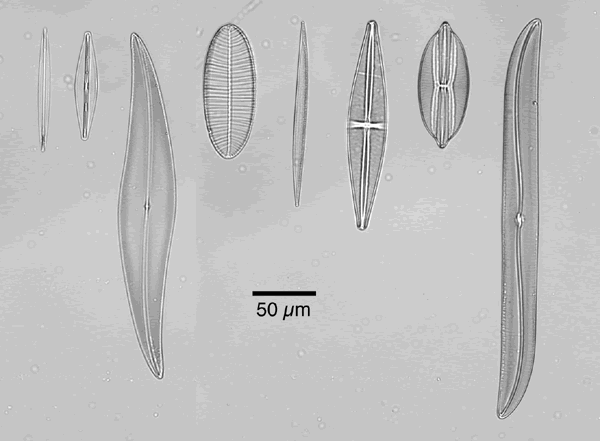
Diatoms as Test Objects for Light Microscopy
In the first microscopy lab, you will use a prepared slide of diatoms, microscopic algae that build a silica case around themselves. Major deposits of these cases are known as diatomaceous earth and are used commercially as abrasives and for filtration. When examined in the light microscope, these cases are incredibly beautiful. Because of the periodic striae (or lines) on their cases, they form excellent objects for testing the resolution of the light microscope. You will test your ability to resolve these lines using objective lenses of known numerical aperture.
There are a couple of web sites to consult for some more information on diatoms. One is maintained by the UC Berkeley Museum of Paleontology: http://www.ucmp.berkeley.edu/chromista/bacillariophyta.html
A second is maintained by the California Academy of Sciences: http://www.calacademy.org/research/diatoms/

Diatom Test Plate
8 forms (from right to left on slide, as shown in figure above)
Specimen |
Approximate Length (µm) |
Striae/10 µm |
Interval between striae (µm) |
Amphipleura pellucida |
100 |
37 |
0.270 |
Frustulia rhomboides |
80 |
34 |
0.294 |
Pleurosigma angulatum |
275 |
19 |
0.526 |
Surrieila gemma |
110 |
20 |
0.500 |
Nitzschia sigma |
150 |
23 |
0.435 |
Staruoneis phoenocenteron |
170 |
14 |
0.714 |
Navicula lyra |
100 |
8 |
1.250 |
Gyrosigma balticum |
320 |
15 |
0.667 |